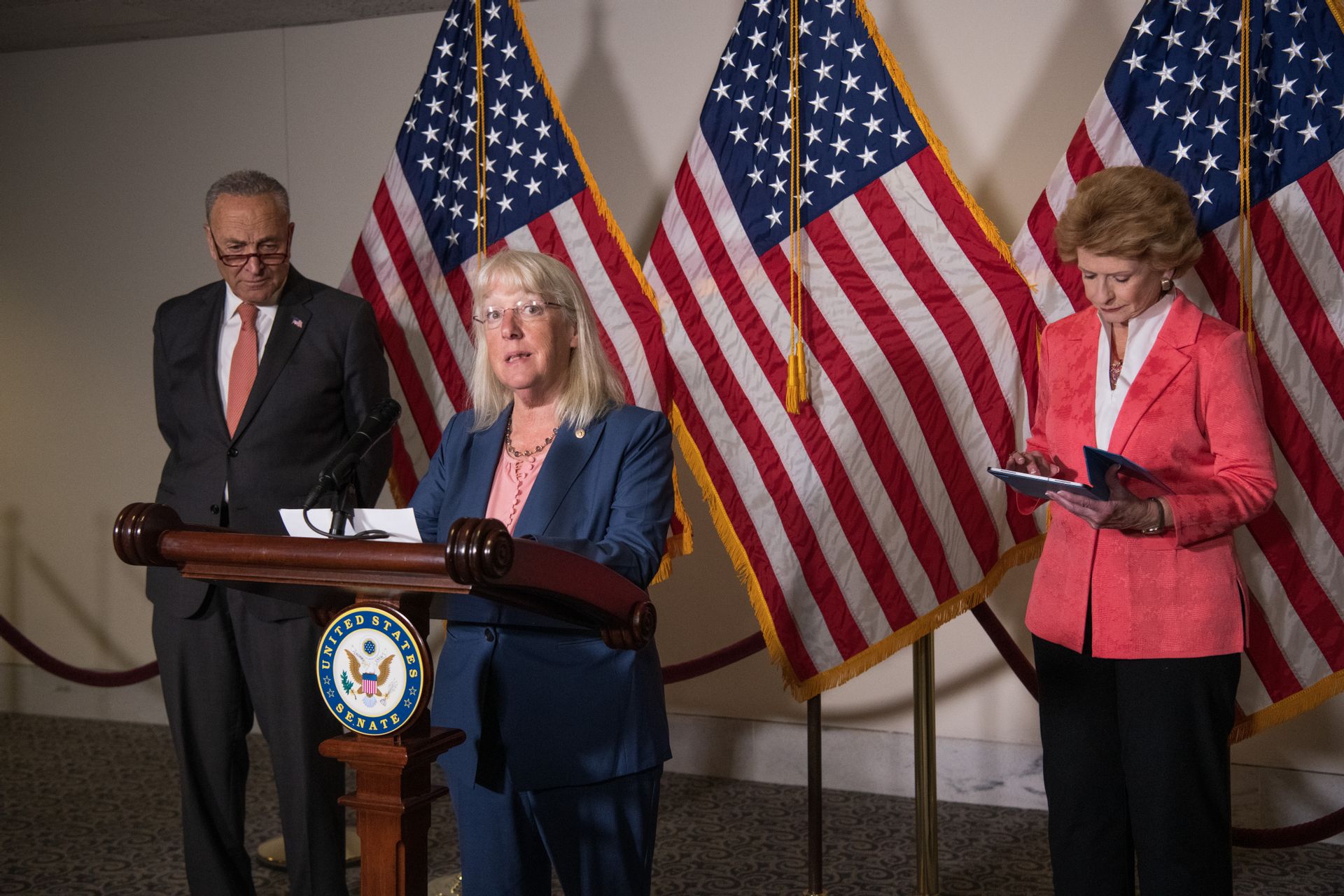Senator Murray Pushes Forward Critical Port, Water, and Salmon Projects
WASHINGTON, D.C. – Today, the Senate passed the Water Resources Development Act (WRDA) of 2022 as part of the National Defense Authorization (NDAA) by a vote of 83-11. U.S. Senator Patty Murray (D-WA), a senior member of the Senate Appropriations Committee, fought to secure language in the bill that would provide funding for critical port, water resource, and salmon restoration projects in Washington state. The NDAA, already passed in the House, will now head to the President’s desk to be signed into law.
“Passing the Water Resources Development Act was of the utmost importance, which is why I worked tirelessly to include the investments salmon populations and communities across Washington state need,” said Senator Murray. “The provisions we secured will go a long way in protecting Puget Sound ecosystems, restoring critical salmon habitat, upgrading our water transportation infrastructure, and ensuring every family has access to clean, safe drinking water. This legislation is good news for our salmon, good news for our ports, and good news for our entire state.”
Below is a full list of all Washington state projects included in the WRDA Bill:
Howard A. Hanson Dam Downstream Fish Passage Facility:
WRDA will authorize construction of the Howard A. Hanson Dam Downstream Fish Passage, which will open at least 100 miles of prime salmon and steelhead habitat above the Howard A. Hanson Dam in Pierce County, nearly doubling the amount of habitat currently available. Completing the downstream fish passage facility will also allow the Additional Water Storage Project for the Green River to move forward, ensuring clean water to surrounding communities.
Tacoma Harbor Deepening:
WRDA will allow the Army Corps to deepen the Blair Waterway at the Port of Tacoma. The current authorized depth of the federal channel in Tacoma’s Blair Waterway does not meet the draft requirements of today’s fleet of larger container ships, which means these ships can’t call on the Port of Tacoma. Deepening the waterway will allow for these ships to call on the Port of Tacoma, creating more economic opportunity for the Port, Seaport Alliance and surrounding community.
Duckabush Estuary Restoration:
Directs the Army Corps of Engineers to consider taking further action and providing resources to reconnect the Duckabush River to neighboring floodplains and wetlands by modifying local roads, elevating Highway 101, and rerouting utilities. This is a critical step in the removal and replacement of the Highway 101 causeway and bridges and in the larger Puget Sound Nearshore Restoration Project which is restoring nearshore habitat throughout Puget Sound.
Columbia River Treaty Flood Protection
WRDA directs the Army Corps to study one of the key pillars in the efforts to modernize the Columbia River Treaty regime: flood control in the Columbia River Basin. The Columbia River Basin experiences high annual runoff, variation in flows and a limited amount of water storage in the United States portion of the Columbia River Basin. The WRDA bill authorizes a study to evaluate how to improve water storage and flood control in the Columbia River Basin.
Army Corps Aquifer Recharge and Water Supply Conservation:
Directs the Army Corps to evaluate alternative water storage processes, such as aquifer recharge and groundwater storage, when addressing flood storage and water conservation projects. This will lead to innovative solutions to water conservation and storage challenges that Washington state and states throughout the West face.
Expanding Mitigation Banking:
Allows for more entities to use mitigation banking credits and help process mitigation banking credits. A mitigation bank is a wetland, stream, or other aquatic resource area that has been restored, established, enhanced, or preserved for the purpose of providing compensation for unavoidable impacts to aquatic resources when there are port, flood control or water supply projects. This is a big deal for our ports that undertake many types of projects that require mitigation banking credits when taking on projects to improve supply chain efficiency and resilience, safety, job growth, and economic development which benefit the community and the region.
Columbia River Village Development Plan:
Requires the Army Corps of Engineers to revise and complete the village development plan for Dalles Dam, Columbia River, Washington and Oregon to address the impacts to Indian villages and housing sites that resulted from construction of multiple dams by the Corps in the Columbia River Basin. When the Dalles Lock and Dam was constructed in the 1950s, Tribal villages in Celilo, Oregon and Spearfish, Washington were inundated and lost. The Flood Control Act of 1950 authorized the construction of a replacement village to compensate the four Columbia River Treaty Tribes: the Confederated Tribes and Bands of the Yakama Nation; the Confederated Tribes of the Warm Springs Reservation; the Confederated Tribes of the Umatilla Indian Reservation; and the Nez Perce Tribe.
Puget SOS Act, Establishing Puget Sound Recovery National Program Office in the EPA:
Enacts the Promoting United Government Efforts to Save Our Sound (PUGET SOS) Act to enhance the federal government’s role and investment in the Puget Sound, the nation’s largest estuary by volume and the heart of Washington state’s identity and economic engine. This provision will establish a Puget Sound Recovery National Program Office in the EPA to coordinate Puget Sound protection and restoration efforts and codifies the Puget Sound Federal Leadership Task Force to coordinate the agencies that have a role in Puget Sound recovery.
Water, Wastewater, and Stormwater Environmental Infrastructure:
Authorizes several water, wastewater, and stormwater projects in Washington state, including Bonney Lake ($3 million), $5 million for Burien ($5 million), Ellensburg ($3 million), North Bend ($30 million), Port Angeles ($7.5 million), Snohomish County ($56 million), and in seven counties across Western and Central Washington ($200 million).
###


